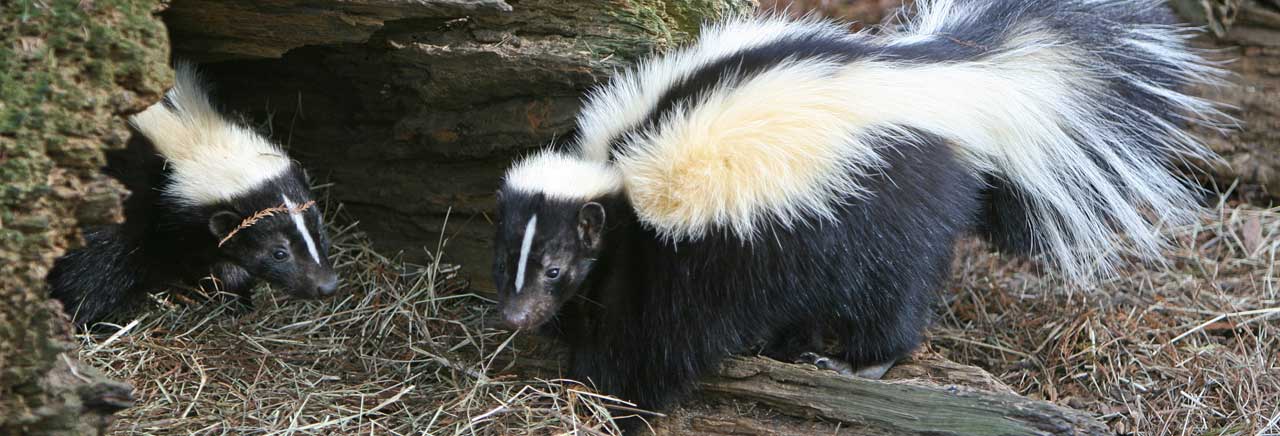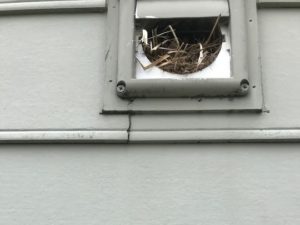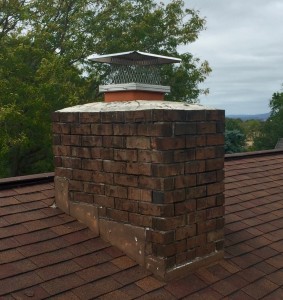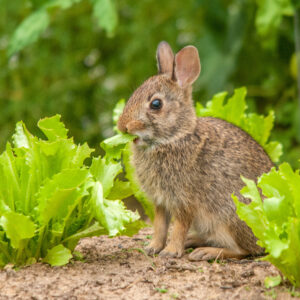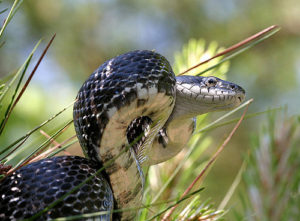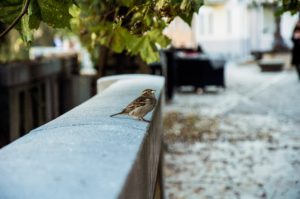
As spring approaches, birds return to the north and begin nesting. Bird problems develop when cavity dwellers, such as House Sparrows and Starlings, begin to invade your home.
Birds in vents are particularly destructive once they gain access to your home. Bathroom vents, dryer vents, stove vents, and microwave vents are common entry points. Birds will also access your home through gable vents and a wide variety of roof-mounted vents. These include ridge vents, powered fan vents, and static vents.
Damage Caused by Birds in Vents
Birds in dryer vents are an immediate hazard for homeowners. Dryer vents become clogged quickly with nesting material. Furthermore, this causes poor performance from your dryer and the potential for a fire hazard. Bird activity in a dryer vent also causes the exhaust line to tear, allowing the dryer to vent into the wall or ceiling. As a result, unseen moisture damage will occur in your home.
Birds in bathroom vents present different types of issues, such as odors and disease concerns. A clogged or damaged line in a bathroom vent creates air contamination-“sharing the air” with the birds. As the amount of nesting material and droppings increase, warmer temperatures increases odor. Eventually, the odor will permeate the living space. When the exhaust fan is activated, the clogged line can actually force air back into the bathroom.
Diseases they carry
Nuisance birds are direct carriers of disease and the most common ones are Histoplasmosis, Salmonellosis, and E. Coli. Nuisance birds are also frequently associated with more than fifty types of ectoparasites (parasites that live on the exterior of another organism.) These pests can work their way into the home, infest the living space, and bite humans. A significant amount of these pests can also cause general health and well-being issues in both humans and pets.
We provide remediation and repair services for all types of bird issues and exclude the birds from gaining access in the future. We also replace damaged lines, clean out nesting debris, and ensure proper ventilation for all vents.
Call Backyard Wildlife Solutions today if you are experiencing bird problems or birds in vents. We offer bird removal and other services in Lancaster, Lebanon, Harrisburg, Camp Hill, Mechanicsburg, Carlisle, Reading, York, and surrounding areas.
